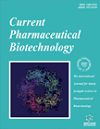
Full text loading...
Overdose involving opioids is the black heart of the addiction crisis. “Pre-addiction,” as an encouraging concept by NIDA and NIAAA, seems best captured with the construct of dopamine dysregulation. Referring to the abundant publications on “Reward Deficiency Syndrome” (RDS), Genetic Addiction Risk Score (GARS) test, RDSQ29, and KB220, Pre-addiction can be referred to as “reward dysregulation” as a suitable suggestion. The hypothesis is that the true phenotype is RDS, and other behavioral disorders are endophenotypes where the genetic variants play important roles, specifically in the Brain Reward Cascade (BRC).
This study tested the pharmacogenomics of the GARS panel by a multi-model in silico investigation in four layers: 1) Protein-Protein Interactions (PPIs); 2) Gene Regulatory Networks (GRNs); 3) Disease, drugs and chemicals (DDCs); and 4) Gene Coexpression Networks (GCNs).
All in silico findings were combined in an Enrichment Analysis for 59 refined genes, which represented highly significant associations of dopamine pathways in the BRC and supported our hypothesis.
This paper provides scientific evidence for the importance of incorporating GARS as a predictive test to identify Pre-addiction, introduce unique therapeutic targets assisting in the treatment of pain, drug dosing of prescription pharmaceuticals, and identify the risk for subsequent addiction early in -life.

Article metrics loading...

Full text loading...
References


Data & Media loading...

